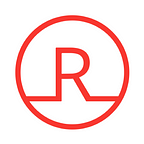APPLICATION OF BLOCKCHAIN TECHNOLOGY IN MEDICINE
Philipp Mironovich, co-founder of Robomed Network
#DECENTER CRYPTOEVENT MOSCOW 2018
How do medicine and blockchain intersect, and what is the effectiveness and meaning of their connection? For understanding the necessity of distributed ledger technology in medicine, an attention to main problems in the industry is required. Those problems are connected with data received by the patient when he attends several clinics. Bringing all the medical information together often turns out to be a huge problem.
For example, the patient receives written documents in the first clinic, some information for his personal account that is often difficult to access in the second, and a link to images in PACS archive in the third clinic. In case a patient or his relative has a serious disease, one has to carry around plenty of DVDs, flash drives, papers to accumulate all those data with some of it yet remaining in his mailbox.
When a patient comes to clinic, the doctor has to explore all that information, though it usually doesn’t happen. There is no proper analysis made, the doctor simply thumbs through documents and forms his opinion on each concrete case over again. At the same time, the worldwide trend is now to apply AI and machine learning in the EHR systems used by hospitals to generate predictive analyzes and risks specific to patients based on data collected by one or a network of hospitals.
It is impossible to build a global model based on a particular healthcare system of a particular country, combining private, state and insurance clinics, with no single distributed ledger of the unique and correct patient card, which should serve as the basis of that education model. This is exactly what a blockchain technology allows to implement.
Let’s take a closer look at the system’s evolution. Initially, a decision was made to write down all the data from the patient card on blockchain, but this is not a technically feasible task. It is not economically efficient. Firstly, the database maintenance where every changing in card will be written on blockchain costs a sight of money. Secondly, the speed of current solution using blockchain technology doesn’t allow to connect even one single hospital to such a system. The fact is that for one day in an average hospital with an area of 10 000 meters there are about 25 000 different transactions related to data processing — their modification, recording and viewing.
Therefore, people came to understand that, instead of using cards, it is possible to record logs with data: in which hospital, by which doctor and for which patient a certain service was provided to. A corresponding set of encodings is recorded in hash, according to which the system can decipher and find out that the information needed can be obtained from the registration database of the required clinic.
The healthcare market is a vast platform for innovations, with a turnover of about $4.6 trillion around the world. At the same time, 60% of the turnover fall to the share of Europe and USA, and 60% — to the share of developing countries. That is exactly in developing countries where there is an explosive growth highest potential in medical field. If we look at per capita costs, we can see that they are not even there enough to provide the necessary education to support the standards of care and medical services, that have already been adopted in Europe and America.
Let’s now move to the regulator’s opinion on these projects. Unlike various crypto exchanges and projects trying to avoid the existing banking, payment systems and further organizations, Robomed Network was noted in the economic report of the US Congress on March 13, 2018 as an accurate example of blockchain technology usage, that fits into the modern society as a logical continuation and works in accordance with the legislation of most countries.
Such projects like Health Nexus, Medicalchain, and MediBloc use the algorithm described above — when a hash with information from the card comes to blockchain, the patient sees the history of these records and can permit the doctor from another clinic to view them. This refers to the authorizing access to medical data, from which an asset, that a patient can hypothetically sell later, for example, for further use in research or advertising, is made. In fact, none of this has yet been implemented, no one sells anything, and no one understands why this should be introduced to hospitals. The whole theory of these models is based on the fact that they will integrate everywhere, receive data from a variety of sources and make them the property of a patient who is supposedly going to profit. However, there is c real clinic where this technology is already implemented.
In Robomed Network project, we not only provide control over data access, we create a new more competitive product for medical services packaging. A platform allowing a clinic to provide patients with treatment according to a certain standard technological scheme, and that is applicable both for a specific service and for a whole service package. For example — that the primary reception will last at least 20 or 30 minutes, the diagnosis and all fields of the protocol will be filled in and the doctor will give the patient a printed document. This is a checklist controlled in real time on a smart contract.
Our technology allows simplifying the online purchase of medical services, because there is now a real gap between what the patient actually receives at a doctor’s appointment and what is promised to him via numerous websites and various medical aggregators. Thus, we create a platform that allows us to guarantee a certain quality of medical services.
